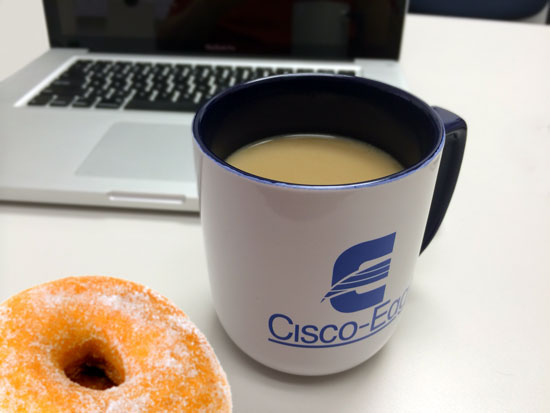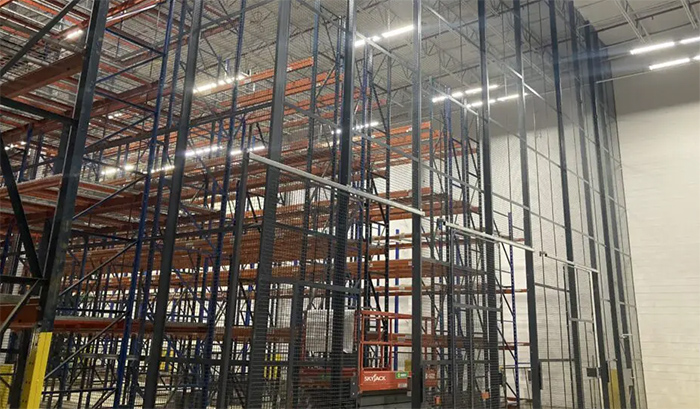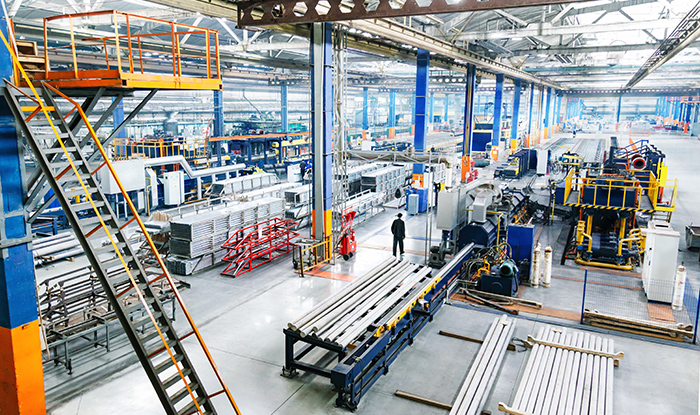Insights: Insurance, Productivity and Automation
August 2024 insights from Cisco-Eagle

This month we’re highlighting the insurance perspective of safety, robotics and AI; the importance of well-thought-out storage systems for aerosols; and whether our domestic manufacturing boom is here to stay. We also touch briefly on what the coming months look like for freight rates and industrial construction.
Industry Today: The Rise And Risks Of Autonomous Robots In The Workplace
Robotic safety from an insurance and underwriting point of view
Andrew Zarkowsky, who heads up the Hartford company’s AI underwriting group, speaks up about the risks ahead associated with autonomous robots, AI – and the eventual confluence of those technologies. This is an excellent perspective on how insurance companies see these trends. Zarkowsky correctly points out that safety gains are happening alongside any potential risks. For instance, a robot can remove workers from dangerous areas and activities entirely – places with environmental challenges like chemicals and fumes, for instance.
Evaluate work zones as you consider autonomous robots
Look at the “where” and how it may impact the “how.”
- Robots are more suited in a warehouse than a public road or retail store, where the environment and behaviors are less predictable and stable.
- Zarkowsky recommends that companies evaluate risk based on the environment at the same time as insurance coverage – particularly liability insurance.
- Risk transfers (are you responsible – or is the robot vendor) should be considered in this evaluation.
- How will warranties work in terms of insurance coverage? Look at the statement of work for definitions of responsibility.
Zarkowsky states that 21% of warehouses use robotics to some degree and that implementations are growing. However in many of these instances, humans are required to monitor, track and correct robots as they work. Another way robots are being deployed is in the realm of security, where they can both demonstrate security presence, monitor and record behaviors that fixed cameras may not be able to match.
Read more: Automation: It’s Not All-or-Nothing
He recommends that companies start small by deploying robots in lower-risk areas to test their efficacy and evaluate safety and risk factors. You may need to bring in specialized personnel who can help navigate the process. Zarkowsky believes that you will need to have a comprehensive understanding of AI and robotics – not just one or the other.
WireCrafters: Understanding Aerosol Storage Cages

Storing pressurized solvents, sprays and cleaners requires special care, as these can be flammable and dangerous when stored in regular inventory. Segmenting these products into safer storage areas can help with compliance and overall plant safety. In this article, WireCrafters lines out what you need to know about this storage and safety challenge.
Key takeaways
- Safety compliance is critical. OSHA, NFPA and other local regulations may apply.
- Reduce fire hazards by segmenting this type of stock.
- Securing these products protects people and the plant environment.
- Organization and security are critical for these types of storage applications.
Because these solutions also help ensure both safety and security, when you store flammable or otherwise dangerous materials from aerosols to oils or solvents, all storage systems should be evaluated for compliance and employee safety.
Above: Video – DEA compliant storage cage design
Is U.S. industrial renaissance built to last? Problems overseas indicate it’s ‘here to stay.’

American manufacturing is seeing its largest boom period since World War II, according to the Federal Reserve Bank of St. Louis, with the trend accelerating greatly since 2020. Rick Barret of the Milwaukee Journal Sentinel focuses on the reasons why, and how it’s affected Wisconsin manufacturers as demands have increased. American manufacturers are being driven by multiple global forces that are driving production away from Asia (particularly China) and back to North America.
Read more: Bringing It Home: how manufacturing is returning to the U.S.
The question: can this continue? Can the boom last?
- While much of the boom can be attributed to billions of federal dollars being funneled into specific technology and renewables manufacturing, that’s only one factor.
- Risky, international supply chains are another. Companies are leery of China, where they had once embraced the low-cost labor giant.
- China is no longer the low-cost provider, even with its massive subsidies and established footprint. American manufacturing has become much more cost-competitive, with simpler and safer supply chains.
- The biggest question for American manufacturing is labor – or a lack of it.
China is responding to these trends, but faces a host of internal issues as well. It’s still a giant in terms of manufacturing capacity and raw materials availability. It faces a significant population and demographic issue, as well as competition from India, Mexico and other Asian nations.
Quick hits
- Speaking of manufacturing, Cushman & Wakefield has an interactive map of industrial real estate activity is happening in a select group of American cities. It provides the amount of industrial construction across these growing markets.
- In The importance of “safety-first culture” as workers’ comp premiums surge, Insurance Business Magazine emphasizes that the costs of neglecting safety are much higher than the costs of engaging in safe operating practices. Employers are paying over $1 billion per week in direct workers’ compensation alone, according to the article. That cost alone is reason enough for a improving safety cultures, systems and processes. The indirect costs in morale, culture and productivity may even be higher.
- Firmer freight rates are on tap for 2025, according to transportation analysis firm FTR, in this Supply Chain Exchange article. While conditions weakened in July vs. June, core freight dynamics continue to improve. FTR believes that carriers will experience improved general market conditions.
Scott Stone is Cisco-Eagle's Vice President of Marketing with 35 years of experience in material handling, warehousing and industrial operations. His work is published in multiple industry journals an websites on a variety of warehousing topics. He writes about automation, warehousing, safety, manufacturing and other areas of concern for industrial operations and those who operate them.



